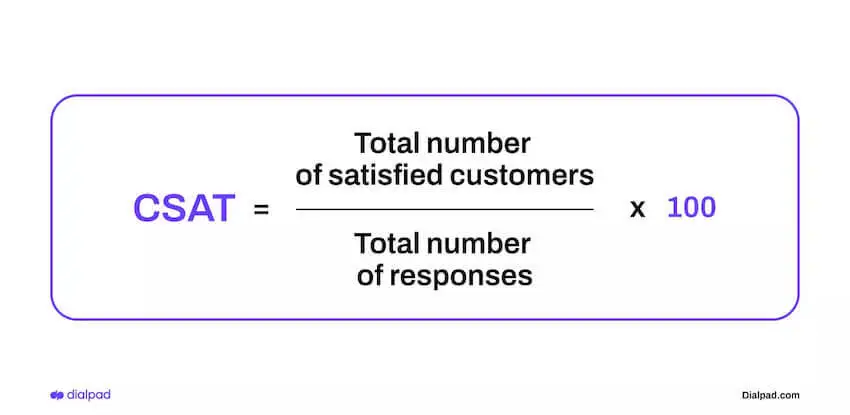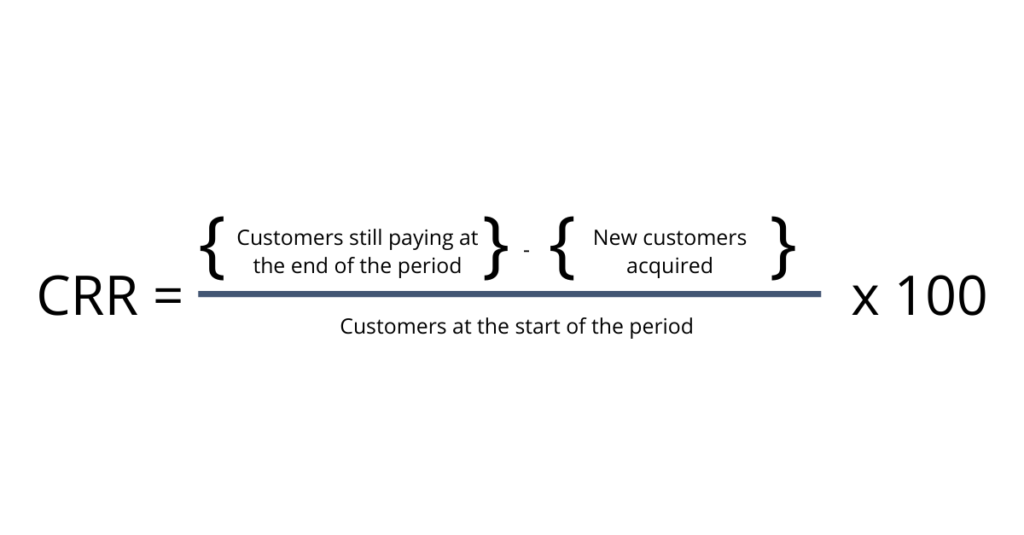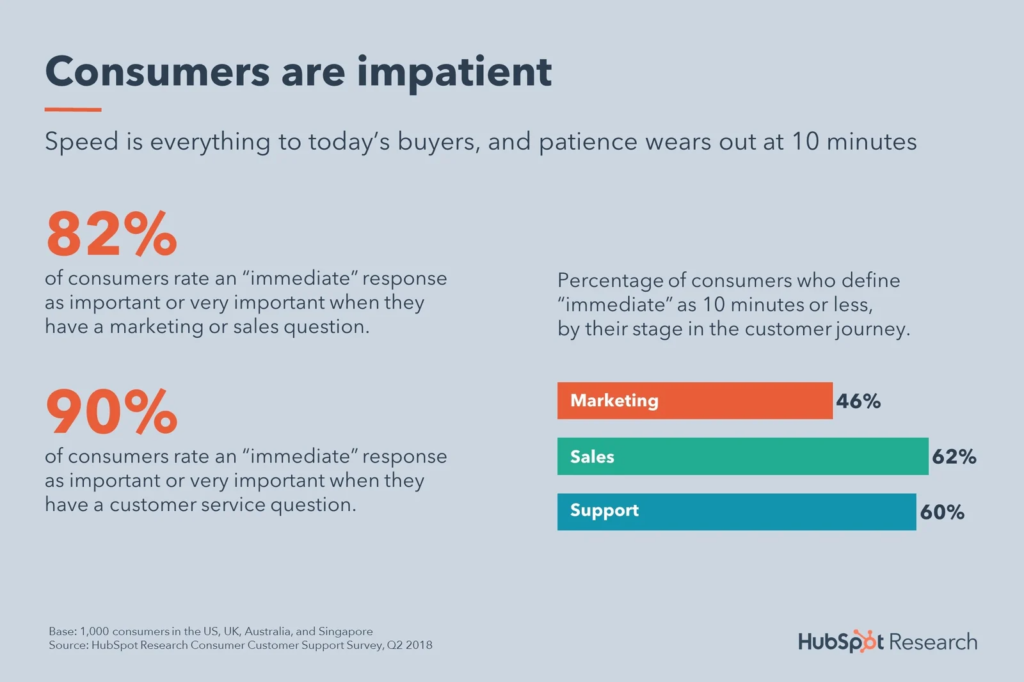7 Key Customer Service KPIs You Should Always Track
Today, customer service is at the heart of business success—90% of consumers say the quality of customer service they receive is important to them, and many use it as a decision factor when they make purchase decisions. It’s critical then, to measure the success of your customer support strategy.
In this guide, we’ll cover the customer service KPIs every business should have on their list, why they matter, and how to use each of them in practice.
Quick Takeaways
- Scores like customer satisfaction score, Net Promoter Score, and customer effort score give you insight into how your customers feel about their experiences.
- Customer retention rate helps you track how well you’re retaining customers over time.
- Tracking abandon rate helps you ensure your team is solving customer problems at a high rate (and that you aren’t losing any in the process).
- Identify your customer care strengths and weaknesses by analyzing your customer retention rate.
7 Customer Service KPIs You Should Track
Customer Satisfaction Score
Customer Satisfaction Score (CSAT) is a survey-based customer service KPI that measures how satisfied your customers are with a specific experience or interaction with your business.
By surveying customers at strategic times—such as after they onboard, or immediately following a purchase—you gain valuable insights into their experiences.
To measure CSAT, survey customers with a singular, direct question: “How satisfied were you with XYZ service or experience?” Ask your customers to answer using a rating scale from 1-5, as follows:
- Very unsatisfied
- Unsatisfied
- Neutral
- Satisfied
- Very satisfied
Then, to calculate your percentage of satisfied customers, divide the total number of responses by the number of satisfied ratings (4 or 5), and multiply by 100.

The significance of CSAT lies in its direct impact on your revenue potential. Satisfied customers are more likely to become repeat buyers and brand advocates, ultimately driving more sales and company growth.
First Contact Resolution (FCR)
First Contact Resolution (FCR) measures the percentage of customer issues resolved during their initial interaction with your support team.
FCR is a pivotal customer service KPI because it reflects your team’s efficiency in problem-solving. A high FCR rate signifies that your customer service agents are adept at addressing concerns promptly, often before the customer even hangs up the phone or ends an online chat session.
This kind of efficiency minimizes customer frustrations, builds trust, and fosters loyalty. It also positively impacts efforts like demand generation and customer lifecycle marketing by reducing the need for follow-up and delivering seamless customer experiences.
To calculate FCR, divide your total number of customer cases by the total number of cases resolved on the first call, then multiply by 100.

Net Promoter Score
Net Promoter Score is one of the simplest but most powerful customer service KPIs for measuring your team’s performance. To measure it, ask your customers how likely they are to recommend your business to their contacts.
Use a scale from 0 (not likely) to 10 (extremely likely). Then, segment responses into the following three categories:
- Promoter: 9 or 10 rating, loyal customers and brand advocates
- Passive: 7 or 8 rating, generally satisfied but not overly enthusiastic
- Detractor: 0 to 6 score, unsatisfied customers

Tracking NPS on an ongoing basis helps you stay on the pulse of how your customers feel about your company, uncover reasons for dissatisfaction, and improve those areas of your customer service to avoid losing business.
Abandon Rate
Long wait times are a significant pain point for individuals making customer service inquiries. The longer a customer has to wait on hold before talking to a live customer service representative, the more likely they are to hang up.
Measuring abandon rate gives you insight into your customer service efficiency and helps you streamline processes where needed to improve (for example, by leveraging tools like chatbots, or increasing human staffing).
A typical abandon rate is 5% to 8%. Any rating above 10% is cause for concern.
Customer Retention Rate (CRR)
Customer Retention Rate (CRR) is a vital customer service KPI that calculates the percentage of customers you maintain over a specified time frame.
To calculate CRR, take the number of customers still paying at the end of the period + the number of newly acquired customers during that same timeframe. Then, divide by the number of customers at the start of the period and multiply by 100.

Retention rate gives you insight into how well you’re serving your customers after they initially convert. Some churn is of course unavoidable, but if you’re losing customers at an alarming rate, you know you need to adjust your service strategy to deliver a better experience.
- Average Response Time
Average Response Time (ART) measures the time it takes for your customer support team to respond to inquiries. Reducing response times enhances customer satisfaction and demonstrates responsiveness.
This is a priority for today’s customers more than ever before. HubSpot research found that a staggering 90% of consumers today expect an “immediate” response of 10 minutes or less when they have customer service questions, underscoring how critical it is that your response times are as short as possible.

Customer Effort Score
The Customer Effort Score (CES) is a customer service KPI that measures how easy or difficult it is for customers to resolve issues with your support team.
Lower CES scores indicate a smoother, more efficient customer experience. Monitoring CES helps you identify pain points in the customer experience you provide, and enables you to streamline processes to remove them.
You can measure CES using a rating scale asking customers to rate how easy it was to get their issue resolved.

Improve the Quality of Your Customer Service
Televerde provides sales, marketing, and customer experience solutions to global businesses looking to meet the evolving needs of today’s customers through quality customer service.
Contact us to learn how we help you develop strategies to increase customer retention through superior customer care.


